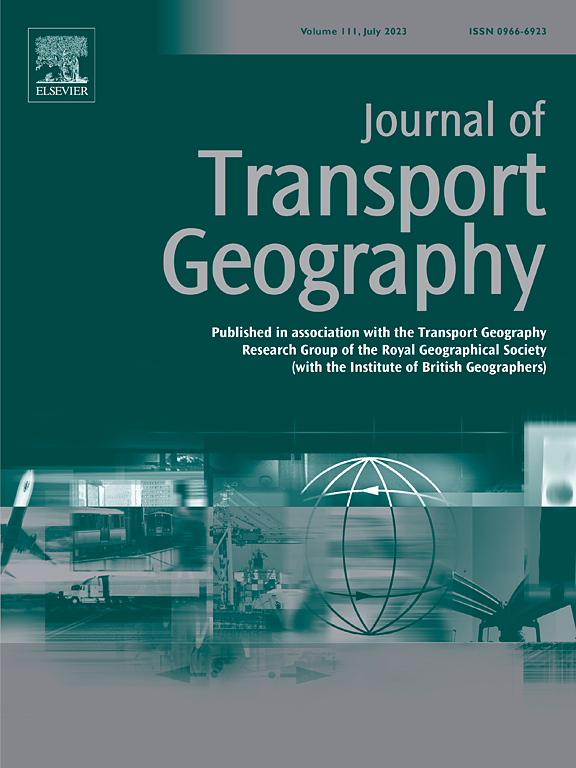Measuring transport poverty with a mixed-methods approach. A comparative case study of the German cities Berlin and Hamburg
IF 5.7
2区 工程技术
Q1 ECONOMICS
引用次数: 0
Abstract
This mixed-methods study examines transport poverty in Berlin and Hamburg, combining GIS-based spatial analysis of public transport (PT) service levels with qualitative interviews of 40 welfare recipients about their transport experiences. The research reveals that low-income residents do not have worse absolute access to PT, but per-capita service is poorer due to high population density. This highlights inequities where crowded transport systems diminish service quality. The interviews also show that high PT fares, before the introduction of the €58 “Deutschlandticket,” had been a major barrier, forcing individuals to choose between transport and other essential needs like food and housing. This financial constraint limits mobility, employment, and social interaction. The study’s integration of GIS analysis and personal interviews provides a comprehensive view of transport poverty, capturing both systemic issues and individual coping strategies. The findings suggest a typology of seven mobility types among low-income residents, offering policymakers a framework for targeted interventions. Recommendations include fare reductions, improved per-capita services in dense areas, and enhanced support for vulnerable groups to address both systemic inequalities and financial barriers, advancing a transport equity agenda that promotes social inclusion.
用混合方法衡量交通贫困。德国城市柏林和汉堡的比较案例研究
这项混合方法研究考察了柏林和汉堡的交通贫困,将基于gis的公共交通服务水平空间分析与对40名福利领取者的交通体验进行定性访谈相结合。研究表明,低收入居民获得PT的绝对机会并不差,但由于人口密度高,人均服务较差。这突出了拥挤的交通系统降低服务质量的不公平现象。采访还显示,在58欧元的“德国票”(Deutschlandticket)推出之前,高昂的PT票价一直是一个主要障碍,迫使个人在交通和食物、住房等其他基本需求之间做出选择。这种财政约束限制了流动性、就业和社会互动。该研究将地理信息系统分析和个人访谈相结合,提供了交通贫困的全面视角,既捕捉到了系统性问题,也捕捉到了个人应对策略。研究结果提出了低收入居民中七种流动类型的分类,为政策制定者提供了有针对性的干预框架。建议包括降低票价,改善人口密集地区的人均服务,加强对弱势群体的支持,以解决系统性不平等和财政障碍,推进促进社会包容的交通公平议程。
本文章由计算机程序翻译,如有差异,请以英文原文为准。
求助全文
约1分钟内获得全文
求助全文
来源期刊

Journal of Transport Geography
Multiple-
CiteScore
11.50
自引率
11.50%
发文量
197
期刊介绍:
A major resurgence has occurred in transport geography in the wake of political and policy changes, huge transport infrastructure projects and responses to urban traffic congestion. The Journal of Transport Geography provides a central focus for developments in this rapidly expanding sub-discipline.
 求助内容:
求助内容: 应助结果提醒方式:
应助结果提醒方式:


